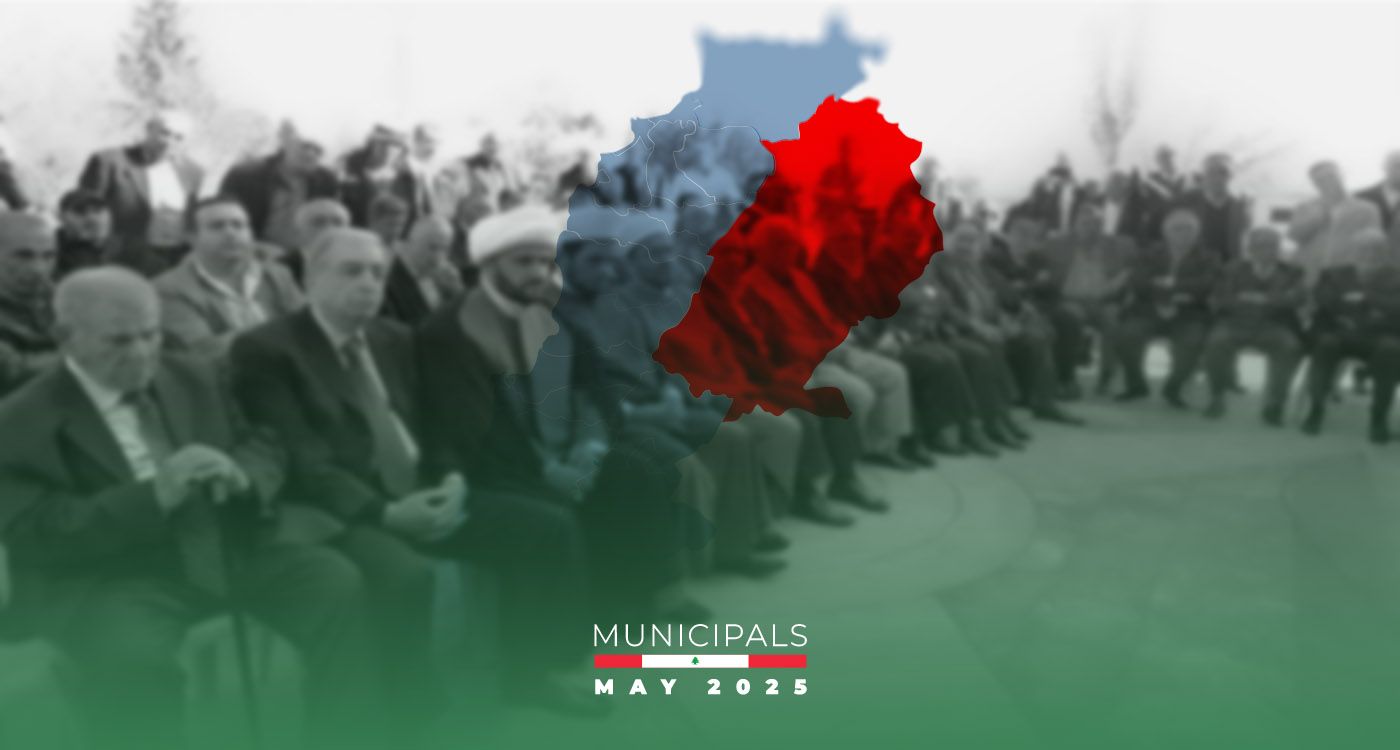
After nine years of waiting, municipal elections will be held starting early next month. This vote carries strategic importance, as it precedes the parliamentary elections by a year and serves as a political barometer, particularly in the Shia regions of Lebanon, which have been affected by the repercussions of the war between Hezbollah and Israel.
In the Bekaa Valley, municipalities play a crucial role: providing services to a marginalized population seeking reconstruction can translate into decisive political capital for national deadlines. These elections will also serve to assess the strength of the “legitimate” representation of the Hezbollah-Amal duo within the Shia community. In this context, how will the Shia clans of the Bekaa approach this vote, and why is their role particularly significant?
Who Are These Clans?
The Bekaa plain, in eastern Lebanon, is shaped by a social and political structure in which Shia clans play a central role. These large families, primarily concentrated in the Baalbek-Hermel region, possess a level of security and economic autonomy distinct from that of Shias in southern Lebanon.
General Khalil Helou, political analyst and professor of geopolitics at Saint Joseph University in Beirut, distinguishes between these two communities. He explains that the South, with its fertile agricultural lands, is dominated by a feudal spirit, while Baalbek-Hermel, with its arid and difficult terrain, favors a tribal structure.
These clans are grouped into two main factions: the Chamsiyeh and the Zeaiteriyeh. The Chamsiyeh include families such as the Chamas, Allouh, Dandach, Allam, Awad, Nassereddine, and Alaaeddine, while the Zeaiteriyeh include the Zeaiter, Jaafar, Noun, Amhaz, Mokdad, Haj Hassan, and Chreif. Historically, these groups were part of a larger confederation known as the Hamadiyeh, named after the influential Hamadeh family, and the Haidariyé, linked to the Haidar family.
These clans have existed for centuries and maintain deeply rooted traditions. Their culture has persisted despite modern notions of citizenship, law, and rights. They have played a pivotal role in public life since the French Mandate, through independence, the Syrian occupation, and the rise of the Amal Movement and Hezbollah. Imam Moussa Sadr, founder of Amal, relied on families such as the Nassereddine and Jaafar to build his political base—the Movement of the Disinherited—to defend the social and political rights of Shias. However, over time, Amal lost part of its tribal support due to growing feelings of marginalization.
A Pragmatic Relationship with Hezbollah
Since the 1980s, Hezbollah has built strategic alliances with these clans, thereby strengthening its hold on the region. It has provided them with financial and military support, leveraging the Lebanese-Syrian border for supplies through the former Syrian regime.
However, this relationship remains pragmatic. “Clan leaders retain their authority, and Hezbollah struggles to impose its choices where clan allegiance comes first,” explains General Helou. Clan identity consistently takes precedence over political affiliation. While these clans are generally pro-Hezbollah, in cases of conflict between clan loyalty and political support, clan identity always prevails.
Helou also emphasizes that individuals generally possess multiple layers of identity. The same applies to the Shia of the Bekaa, who identify first with their clan, then with their religious and political community—particularly Hezbollah—and finally with their national identity.
This is where the relative nature of clan positioning in municipal elections comes into play. Support for Hezbollah is neither automatic nor guaranteed, and clan autonomy can at times shift local power dynamics. Thus, municipal elections act as a revealing force, outlining power balances that could foreshadow the upcoming legislative elections, which are critical for the Shia duo, and particularly for Hezbollah.
An Influence Extending to Beirut
The electoral influence of major Shia families extends beyond the Bekaa. According to General Helou, several members of the Mokdad and Zeaiter clans are registered in Beirut, though their origins lie elsewhere. These registration transfers were encouraged by Hezbollah to bolster its electoral weight in the capital.
Jean Nakhoul, journalist and electoral expert, explained to This Is Beirut that “the Shia bloc in Beirut is estimated at 70,000 to 80,000 voters, a number that keeps increasing.” This strategic displacement is meant to consolidate the influence of the Hezbollah-Amal duo, especially in sensitive districts.
Hezbollah has also moved voters from the South and the Bekaa to Beirut’s southern suburbs to ensure a solid electoral base for future contests. This strategy illustrates how Shia clans, with their social and political clout, remain key players in the Shia duo’s electoral calculations. Their role transcends geographic boundaries, extending to key areas like Beirut, where their mobilization can sway the electoral balance.
How Do Shia Clans Perceive Municipal Elections?
The Baalbek-Hermel region has historically suffered from underdevelopment. Clans from this area express growing discontent over the neglect by their representatives. Development remains a historic priority, surpassing even the dominant slogans within the Shia environment, including that of “resistance,” especially after the devastating war between Hezbollah and Israel, where reconstruction has become paramount. In this regard, Nakhoul explains that the primary goal of municipal elections for Shia clans is to rebuild their towns destroyed by war. In a post-war context, municipal elections become an arena for political rebalancing.
Consensus: An Inevitable Electoral Strategy
“Contrary to what one might think, it’s not Hezbollah and Amal dictating the rules to Shia clans in the Bekaa. It’s often the reverse, especially during municipal elections,” says Nakhoul. Far from being a docile base, the tribal clans exert decisive influence over local dynamics, forcing the Shia duo to accommodate their interests in order to secure electoral loyalty.
Hezbollah and Amal have always tried to maintain balance among Shia clans, a need that has intensified in today’s post-war context of regional tensions, socioeconomic hardship, and latent popular discontent. In the Bekaa, clan identity remains a foundational factor, particularly for Shias, for whom municipal elections are first and foremost a family affair, and clans position themselves according to their familial interests.
Thus, Hezbollah’s strategy is to form consensus-based electoral lists that include representatives from major local families, particularly in villages where several clans coexist. The goal: to reflect internal balances and prevent divisions. In Taraya, where the Hamiyeh family has near-total dominance, the task is simple. In contrast, in multi-clan localities around Baalbek, reaching a compromise requires greater mediation efforts.
For example, although Hezbollah, capitalizing on its popularity in the region, attempted to impose a comprehensive agreement in these councils—after reaching consensus with Amal in 27 out of 60 municipalities in the 2010 elections—the near-total absence of development, unmet promises, and the failure of previous councils (backed by the Shia duo) to deliver any tangible changes led some families to reject any consensus formula in several municipalities.
Some clans, on the other hand, strive for consensus themselves, not only to preserve social peace and avoid open rivalries but also to reduce the costs of an election campaign. This is the case in the town of al-Khiyara in West Bekaa, where local actors appoint municipal council members to avoid any local conflict. Consensus then becomes a survival strategy and a matter of mutual interest—especially today, given the widespread priority of reconstruction. Nakhoul notes that “for localities needing funding for reconstruction, opting for compromise makes more sense than spending resources on an electoral battle.”
Dissenting Voices in the Bekaa
There is no shortage of dissent. A faction of the Jaafar clan, one of the region’s most influential, maintains a critical distance from Hezbollah, according to Helou. Others, like the Haidar clan, openly position themselves in opposition. Anti-Hezbollah opponents are mobilizing in the Bekaa, but the situation is different in Hermel, where tribalism is much more pronounced than in Baalbek. One notable example is Brital, a village in the Baalbek district, known for its history of opposition to Hezbollah. The former secretary general of the party, Sobhi Toufaily—now a fierce opponent of Hezbollah and Iran—hails from this region. However, what happens in Brital cannot be generalized to the entire Bekaa.
Clearly, today, opposition within Shia clans has a unique opportunity to assert itself, especially in the current geopolitical context, beginning with the municipal elections, potentially culminating in the 2026 parliamentary elections.




Comments